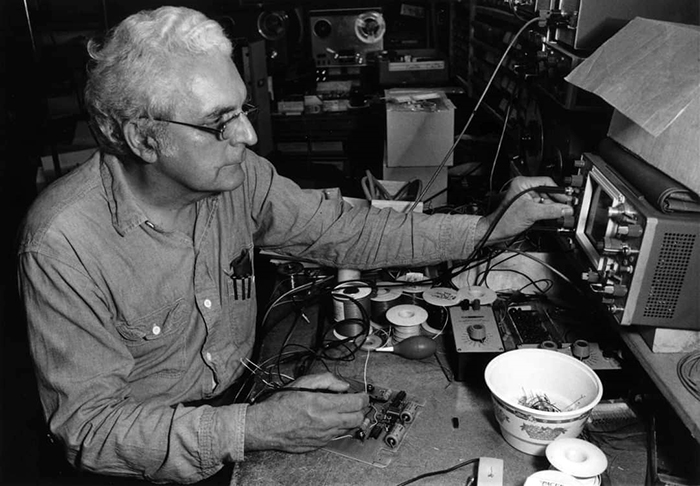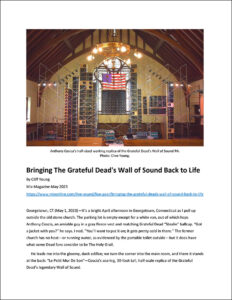Tektronix equipment has been used in music. Raymond Scott was an early electronic music pioneer. In 1946 he formed Manhattan Research where he designed electronic music instruments and composed electronic music for a wide variety of uses. This photo of his lab shows what appears to be a Tektronix 564 storage oscilloscope with a 2A63 300 KHz differential amplifier and a 2B67 timebase plug-in. Both plug-ins were introduced in June 1962 and the 564 was introduced in June 1963.

This 1963 album by Marty Gold and his Orchestra, Sounds Unlimited, features a Tektronix RM503 scope for the album cover. The Tektronix bug was removed from between the power switch and the pilot light. It is not electronic music so the scope was chosen for some other reason.
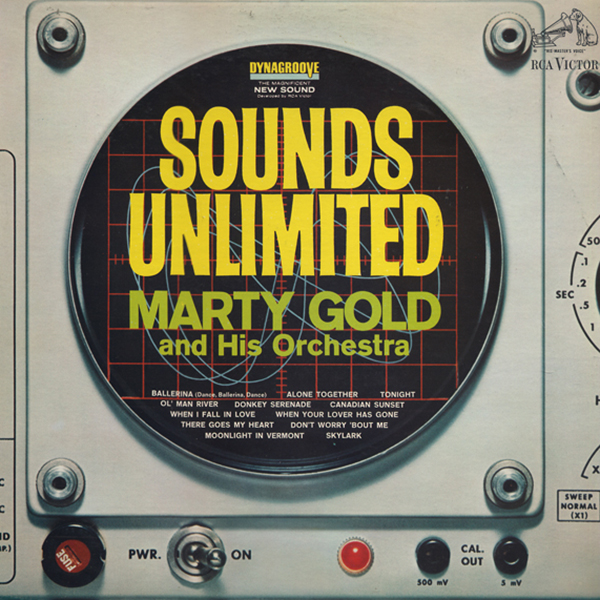
This 1968 article highlights a Tektronix computer playing music.
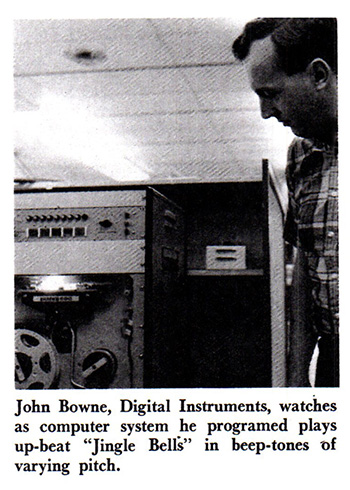
This 1974 sound check setup photo of the Grateful Dead "wall of sound" shows two Telequipment D54 oscilloscopes on the stage.
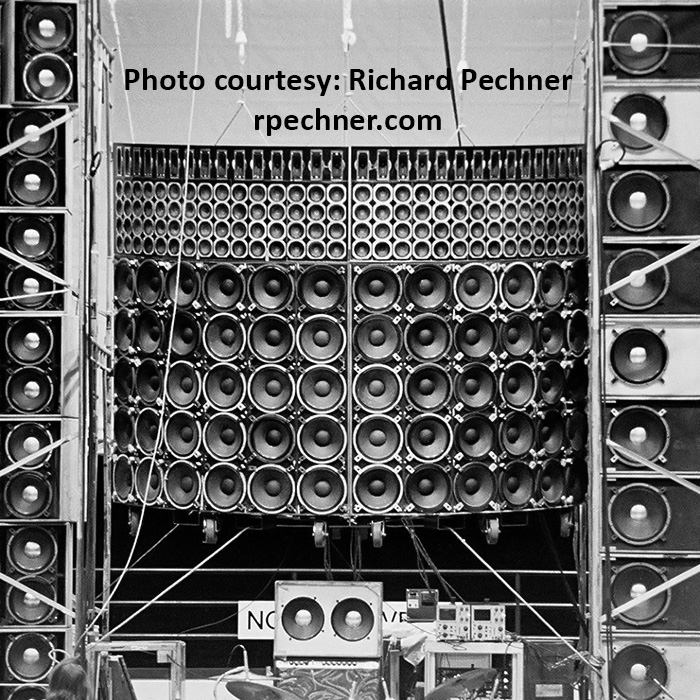
The D54 is a DC to 10 MHz 2 channel oscilloscope with a 6 x 10 cm screen. This photo is from the service manual. There is an ad for the D54 on our Hoddesdon page.
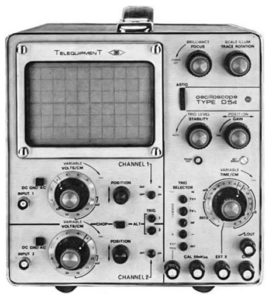
This photo is of a very clean D54 was sent to us from amateur radio operator and Tektronix/Telequipment collector Owen McConnel, VK6YBA, in Perth Western Australia.
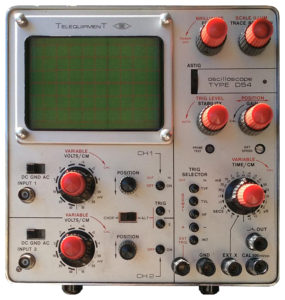
The May 2023 issue of Mix magazine had this article on a recreation of the Wall of Sound. Click on the image to view the PDF.
Iannis Xenakis was a composer, music theorist, architect, and engineer who pioneered the use of mathematical models in music. These photos courtesy of www.lastfm.com show him with a 4014 DVST computer graphic terminal on the far right and his hand on a 4631 hardcopy unit. Also pictured is a graphics tablet which were often used with the terminal in a computer-aided design system configuration.
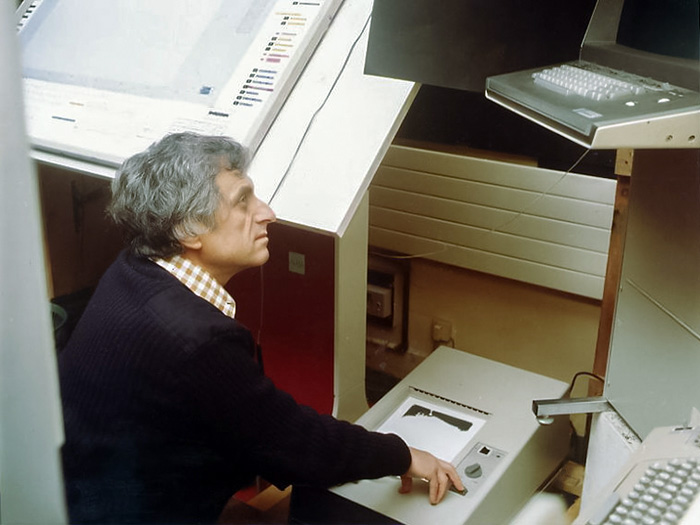
This photo shows the screen and keyboard of the 4014 along with a tablet controller on top.
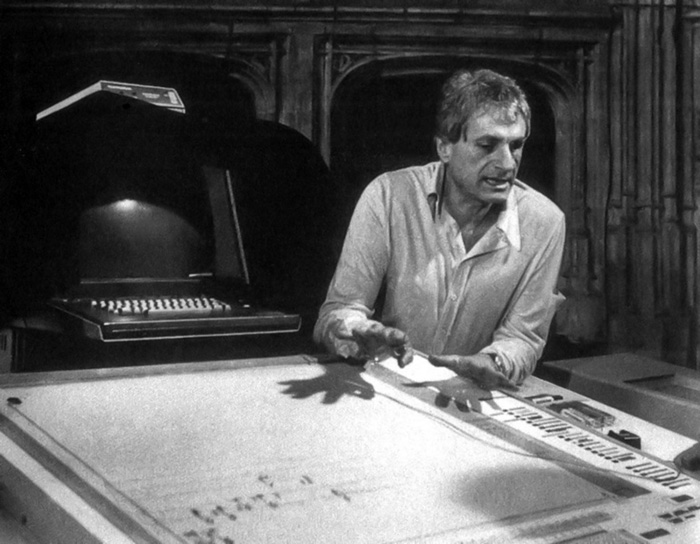
Suzanne Ciani is a musician, sound designer, composer, and record label executive who is very well known for her electronic music and sound effects using her Buchla system. This documentary from the early 1980s Suzanne Ciani Creates The Soundtrack For A Pinball Machine shows her using a 465 oscilloscope at 5:49, 6:02, 6:14, and 6:19.
This 1998 video of Eddie Van Halen's home studio shows a T922R oscilloscope on his workbench at 5:00 minutes. The Tektronix T922R is a rack mount version of the T922 15 MHz dual channel analog scope. It was produced from 1977 to 1984.
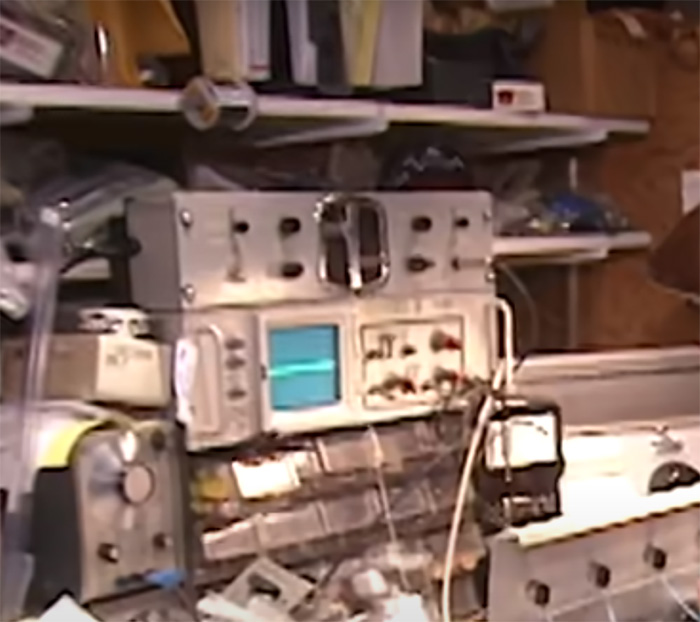
The EMS Synthi 100 was a large analogue/digital hybrid synthesizer made by Electronic Music Studios Ltd in the early 1970s. A total of 30 were built. It featured an integrated Telequipment D43R dual beam oscilloscope.
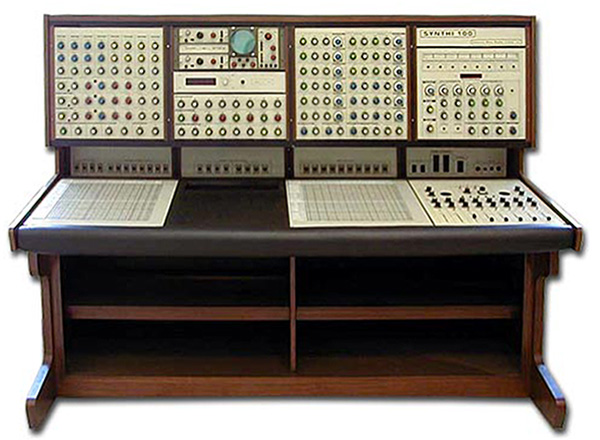
Photo Courtesy of Wikipedia
This excerpt from the December 1969 Telequipment catalog describes the D43R.
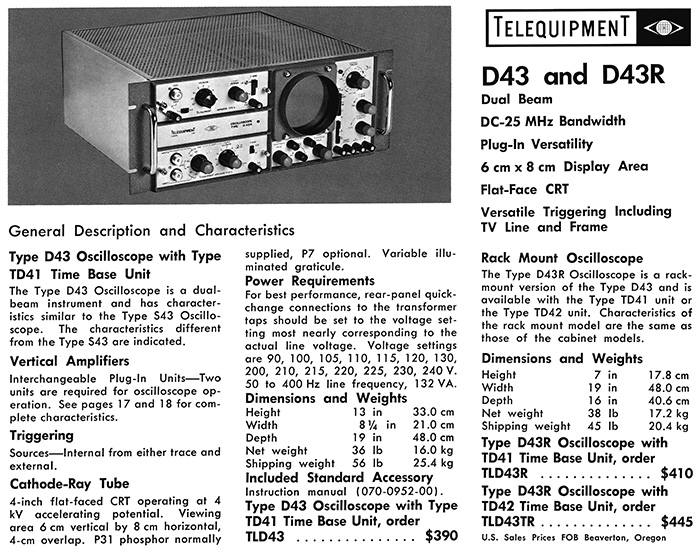
The following is an excerpt from William Kincaid Meets Spectral Analysis. Used with permission from The Absolute Sound, Issue 320.
Most flutists, 80% in one study, will tell you that the tone, or timbre, they produce is the most important aspect of their playing. There are two components that determine timbre, the attack—the short burst of energy that initiates the sound—and the steady-state phase that follows. For many, it’s the harmonic structure of the latter that’s of primary importance.
When Lois Herbine was a young teenager and taking her first lessons with a Kincaid scion, her engineer father analyzed her sonority with scientific test gear. “My Dad came home from work at Leeds and Northrup with a Tektronix 555 oscilloscope,” Herbine told me. “He hooked it up to the iconic Shure 55S microphone from the 1950s (better known as the ‘Elvis Mic’) and created a space for me to test my ability to add overtones to my sound with this visual support. Dad developed test equipment for work and was an inventor on the side, as well. I now believe the use of the oscilloscope to see sound production was a prototype but, for me, it was what you did at home on a Sunday when Mom wouldn’t let you watch TV. As my Dad was also a professional jazz clarinetist and saxophonist—and an amateur flutist—he had an idea of how to explain what to do with my embouchure to create the overtone series in my sound. I recall having a difficult time producing the third harmonic. But when I got it, I learned what that sounded and felt like.”
Mr. Bliss may not have been the first, but he was definitely ahead of his time. “Spectral analysis” graphs of a flute player trying out different techniques of tone production were published as far back as 1967, the year William Kincaid died. The objective investigation of instrumental or vocal tone quality took a big leap forward with the implementation of Fourier analysis. When a Fourier transform (FT) algorithm is applied to a musical signal, the graphic representation is mathematically converted from the time domain to the frequency domain and the harmonic makeup of the sound under study is clearly demonstrated.
The Fairlight CMI (Computer Musical Instrument) was a sampling keyboard system introduced in 1979. The Fairlight CMI - the story of the first commercially available digital sampler and sequencer video shows a Tektronix 465 or 475 on the bench at 10:50.
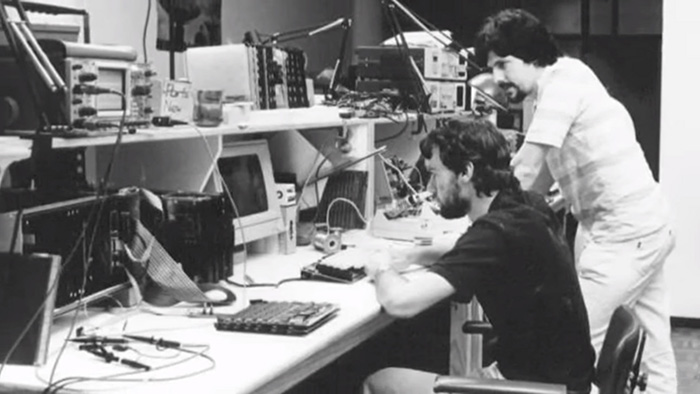
While not specifically Tektronix oscilloscopes, the Oscilloscope Music website is worth checking out. They have a demonstration album available in vinyl, mp3, and flac that draws interesting images on a scope in XY mode. We have a demonstration exhibit of music in XY display on an oscilloscope at the museum.
There is a Oscilloscope Music - (Drawing with Sound) - Smarter Every Day 224 YouTube video which shows how they create these images, and it does feature both a 475 and 7623A oscilloscope.
At 2:35 of the documentary What Really Happened to Akai a Tektronix 503 oscilloscope is shown as part of an evaluation of a Roberts reel-reel tape recorder.
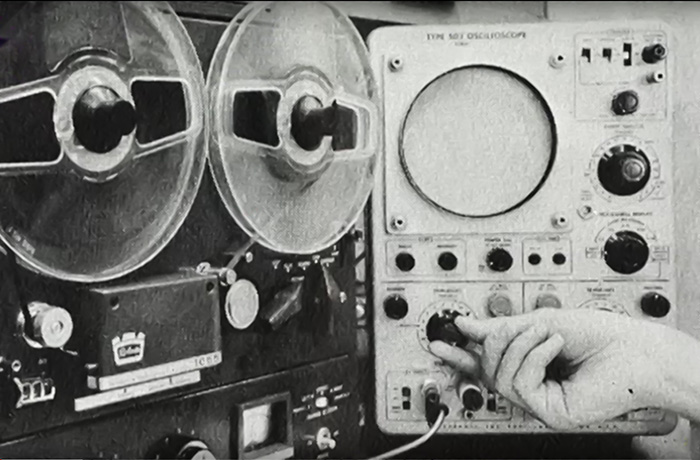
This undated photo shows Bob Moog at his bench using a Tektronix 465/475 oscilloscope. Bob, of course, was famous for his early Theremin product, founding Moog Music and the Moog synthesizer, and later restoring Clara Rockmore's theremin built by Leon himself.
